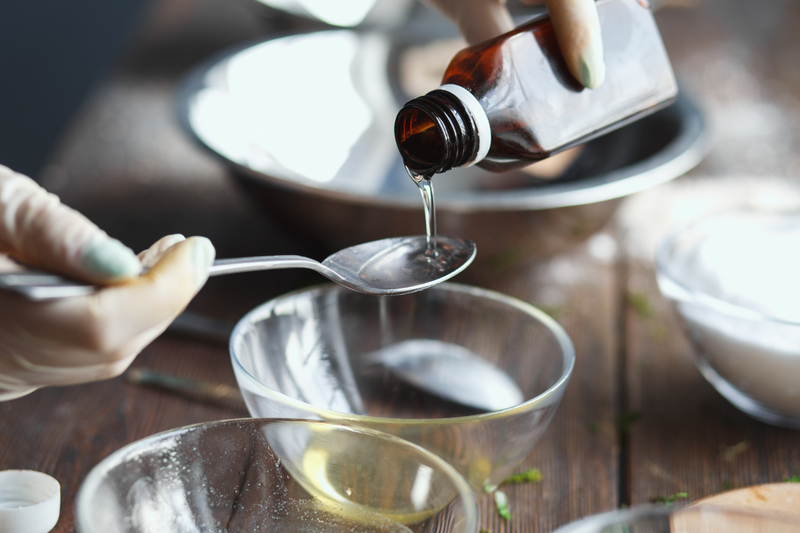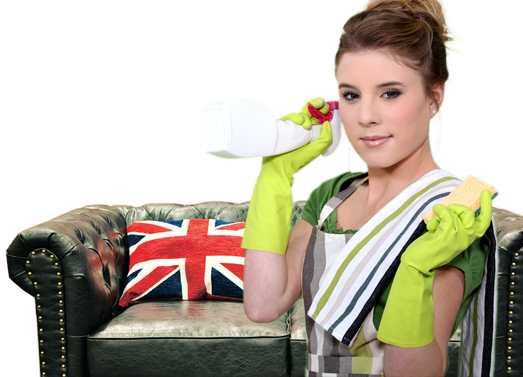Step-by-Step Guide to Maintaining a Mold-Free Bathroom
Posted on 08/06/2025
Step-by-Step Guide to Maintaining a Mold-Free Bathroom
Keeping your bathroom mold-free is not just about aesthetics--it's essential for your health and the structural integrity of your home. This comprehensive guide will show you how to prevent mold in your bathroom, tips for daily maintenance, and what to do if you find mold. Follow our extensive, SEO-optimized guide for all you need to keep a mold-free bathroom sanctuary.

Why Is Mold Prevention in Your Bathroom Important?
Bathrooms are exposed to moisture every day, making them prime breeding grounds for mold and mildew. Mold spores can pose serious health risks, causing respiratory issues, allergies, and damaging surfaces. Understanding the reasons for preventing bathroom mold ensures a healthier living space, longer-lasting furnishings, and improved indoor air quality.
- Health risks like allergies, asthma, and respiratory infections
- Unpleasant odors and visible stains
- Damage to paint, grout, and caulking
- Reducing overall home value
Step 1: Understanding How Mold Grows in the Bathroom
To effectively maintain a mold-free bathroom, it's crucial to know why mold thrives here. Mold loves moist, warm, and poorly ventilated environments. Areas around the shower, tub, sink, and toilet are especially vulnerable. Knowledge is your first line of defense in achieving a bathroom with no mold.
Common Bathroom Mold Species
- Aspergillus: Often found on damp walls and ceilings
- Cladosporium: Appears on grout, tile, and wooden surfaces
- Stachybotrys (Black Mold): Dangerous and requires immediate attention
Understanding these species can help identify mold early and apply the right treatment methods. Regular inspection and proactive cleaning are vital for maintaining a mold-free bathroom.
Step 2: Maximize Bathroom Ventilation
Improving airflow is the most crucial step in long-term bathroom mold prevention. Mold spores thrive in stagnant, humid air. Follow these tips to improve ventilation and prevent mold growth:
- Install and Use Exhaust Fans: Run the fan for at least 20-30 minutes after showers or baths to remove moisture from the air.
- Open Windows and Doors: Allow fresh air to circulate when weather allows, speeding up the drying process.
- Maintain Your Ventilation System: Clean vents and fans regularly to ensure optimal air flow.
Proper ventilation is the cornerstone of keeping a mold-free bathroom. If your bathroom is windowless, consider upgrading to a more powerful exhaust fan or adding a dehumidifier.
Step 3: Wipe Down Wet Surfaces After Every Shower
A simple yet powerful way to prevent mold in bathrooms is to wipe down wet areas after each use. Taking a minute or two after showers and baths can drastically reduce moisture--your number one enemy in the fight against mold.
- Use a Squeegee: Wipe shower walls, doors, and floors after each use.
- Dry Countertops and Sinks: Quickly wipe up spills and splashes to keep water from sitting.
- Launder Bathmats and Towels: Regularly wash and thoroughly dry them to avoid mold buildup in fabrics.
Step 4: Regularly Clean Grout and Tiles
Tiles and grout lines are prime spots for bathroom mold growth. Grout is porous and absorbs moisture easily, providing an ideal breeding ground for mold. Regular cleaning is a must for a mold-free bathroom environment.
Best Practices for Tile and Grout Cleaning
- Use a Baking Soda Paste: Mix baking soda with water and scrub grout lines with a toothbrush.
- Apply Vinegar Solutions: Fill a spray bottle with equal parts vinegar and water. Spray and let sit before scrubbing.
- Commercial Mold Cleaners: If needed, use a specialized bathroom mold remover for stubborn stains.
- Seal the Grout: Apply a water-repellent sealant once or twice a year to protect against moisture penetration.
Always tackle mold the moment you spot it--early intervention is key to maintaining a mold-free bathroom.
Step 5: Control Bathroom Humidity
Maintaining proper humidity levels is vital to the prevention of bathroom mold. Ideally, keep relative humidity below 50%. Excess humidity can be controlled by taking the following steps:
- Use a Dehumidifier: Especially in homes with naturally high humidity, portable bathroom dehumidifiers work wonders.
- Keep the Door Ajar: Allow air to circulate and help surfaces dry faster.
- Monitor Humidity: Install an inexpensive hygrometer to track your bathroom's humidity level.
Consistently controlling humidity is one of the most effective strategies for keeping your bathroom mold-free.
Step 6: Repair Leaks and Address Water Damage Immediately
Leaky pipes, faucets, and showerheads are major contributors to mold problems in bathrooms. Unattended leaks quickly create wet spots behind walls, under floors, and beneath sinks--perfect environments for hidden mold.
- Regularly inspect plumbing: Check pipes, fixtures, and supply lines for drips or condensation.
- Repair immediately: Don't delay fixing leaks, even small ones.
- Replace damaged caulk and grout: Remove and replace any caulking or grout that shows signs of mold or deterioration.
Quick repairs will ensure your bathroom stays mold-free and prevents costly water damage down the line.
Step 7: Remove Excess Clutter and Store Smartly
Clutter--such as extra bottles, loofahs, and decor--can trap moisture and limit airflow, giving mold the opportunity to thrive. Maintaining a clutter-free bathroom aids airflow and simplifies cleaning.
- Limit items in the shower: Regularly remove unused soaps, bottles, and sponges.
- Choose water-resistant storage: Use plastic or metal caddies rather than porous materials like wood or fabric baskets.
- Don't store damp items: Always allow towels, washcloths, and bath toys to dry completely before placing them away.
Step 8: Schedule Deep Cleaning Sessions
While daily upkeep is essential, periodic deep cleaning keeps long-term mold issues at bay. Designate a day each month to pay extra attention to hidden nooks and crannies.
- Wash shower curtains and liners: Machine wash with baking soda and vinegar or replace if infested with mold.
- Clean behind and beneath fixtures: Move toilets, sinks, and furniture if possible to check and clean for hidden mold.
- Scrub exhaust vents: Dust and clean the fan blades and housing to maximize performance.
- Descale taps and showerheads: Regular cleaning prevents mineral build-up that can trap mold spores.
A monthly routine helps keep your bathroom consistently mold-free and fresh.
Step 9: Use Mold-Resistant Products and Materials
If you're renovating or upgrading your bathroom, take the opportunity to use mold-resistant materials. These modern solutions make bathroom mold maintenance significantly easier.
- Mold-resistant drywall (green board): Specifically designed for wet environments.
- Mold-proof paint: Contains antimicrobial agents that inhibit mold growth.
- Water-sealing floor and wall tiles: Choose non-porous materials for easier cleaning.
- Mildew-resistant caulk and grout: Look for silicone-based or anti-mildew formulas.
Step 10: Stay Diligent and Educated
Maintaining a mold-free bathroom isn't a one-time event--it requires diligence and ongoing education. Stay informed about the latest cleaning tips, inspect your bathroom regularly, and involve the whole family in mold prevention habits.
- Educate children and guests: Make sure everyone knows to keep the bathroom dry and clean after use.
- Stay updated: New products, materials, and tools for fighting mold are always emerging--keep an eye out for the latest solutions.
- Regularly inspect for trouble spots: Keep an eye on areas with recurring issues, like the corners of tubs and around windows.
What to Do If You Find Mold in Your Bathroom?
Even when you take every precaution, mold can sometimes sneak in. Here's what to do if you find it:
- Small patches: Clean immediately with a solution of vinegar, baking soda, or hydrogen peroxide. Scrub the affected area, rinse thoroughly, and dry.
- Porous items: If mold is embedded in fabrics, wood, or drywall, removal and replacement may be necessary.
- Large infestations: For extensive or black mold, consult a professional mold remediation specialist.
Act quickly and you'll prevent the spread of spores throughout your home, ensuring your bathroom stays free from mold.
Natural and Commercial Mold Removal Solutions
- Natural Cleaners: White vinegar, tea tree oil, hydrogen peroxide, and baking soda are effective, eco-friendly mold removers.
- Commercial Mold Cleaners: Look for EPA-certified bathroom mold cleaners for severe cases.
- Preventive sprays: Regular application of antimicrobial sprays can keep mildew at bay.

Frequently Asked Questions About Maintaining a Mold-Free Bathroom
- How often should I clean my bathroom to prevent mold?
Aim for light cleaning several times per week and deep cleaning at least once a month. - Can certain plants help absorb bathroom moisture?
Yes, plants like Boston Ferns and Peace Lilies can help, but ensure they don't increase humidity by overwatering. - Is bleach safe for cleaning bathroom mold?
While bleach kills mold on hard surfaces, it doesn't penetrate porous materials. For small areas, it can be effective--but always ventilate well and use gloves.
Conclusion: Enjoy a Healthy, Mold-Free Bathroom Year-Round
By following these step-by-step bathroom mold prevention tips, you can enjoy a clean, healthy space free from unsightly stains, foul odors, and health risks. Consistent maintenance is the key--remember to keep your bathroom dry, ventilated, and clutter-free, and tackle any leaks or signs of mold as soon as they arise.
Ready to take the next step? Make these habits part of your routine and maintain a mold-free bathroom that's safe and comfortable for everyone in your home. Prevention is always easier--and cheaper--than remediation, so invest your time wisely and benefit from a fresh, inviting bathroom every single day!




